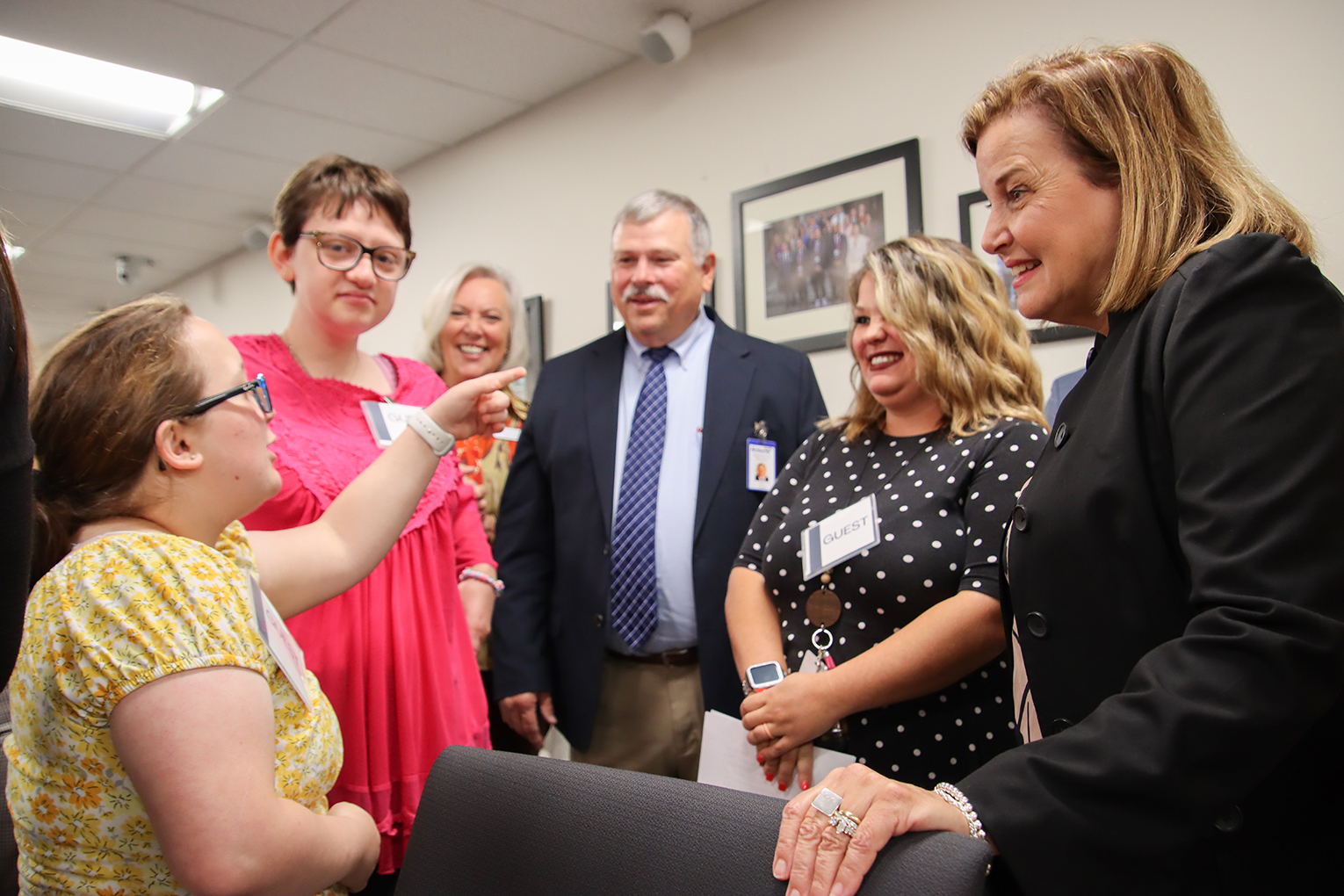By Patti M. Clark
patti.clark@ky.gov
More than 20 percent of middle and high school students in Kentucky report serious psychological distress, and 8.2 percent report they’ve attempted suicide in the past year, according to the 2016 Kentucky Incentives for Prevention Survey. The survey is administered to 6th-, 8th-, 10th- and 12th-graders across the state of Kentucky in October. Results of the survey were released in April.
These statistics represent more than just data points on a chart. They are the students in Kentucky’s classrooms and their mental health crisis is impacting their ability to thrive and achieve in school.
In an effort to reduce these numbers, and – more importantly – the number of students in a mental health crisis, the Kentucky Department for Behavioral Health is offering middle and high schools the opportunity and support to implement the peer-led social norming program, Sources of Strength. Sources of Strength is an evidence-based prevention program shown to impact suicide, substance use, bullying and violence when implemented as designed.
Implementing Sources of Strength
The strength of the program is that it is a peer-led wellness program that uses the power of social networks to get young people excited about leading healthy mental, physical and emotional lives, while helping their peers to do the same. When implemented as designed, it positively influences school cultures and changes norms about help seeking, school connectedness and perceptions of adult support.
The program uses the influence of a diverse group of trained peer leaders – under the guidance of trained adult advisers – to spread messages that promote help seeking, school attachment and connectedness to trusted adults. This is not a curriculum-based program.
Kentucky’s goal is to implement Sources of Strength in 100 schools in the 2017-18 school year. Nearly 50 schools already have expressed interest and are in the process of preparing for implementation, which includes:
- identifying a school-level champion;
- naming a school coordinator;
- selecting adult advisers who walk through the process with the youth; and
- selecting peer leaders who will spearhead social norming campaigns in their school.
The program implementation is funded through federal grants that focus on reducing suicidal behavior and substance use. Implementation support is being provided in collaboration with the Kentucky Department of Education, the Kentucky Department for Public Health, Community Mental Health Centers and Regional Prevention Centers, as well as other community-level resources.
Five community-level trainings are being held across the state to acquaint school champions and community partners with the program and to facilitate implementation. The trainings include:
- Aug. 30 – Campbellsville University/Somerset Campus
- Sept. 7 – Baptist Health Hospital, Madisonville
- Sept. 11 – Centerstone, Louisville
- Sept. 13 – Lexington-Fayette County Health Department, Lexington
- Sept 14 – Morehead Conference Center, Morehead
Registration is free and available at this SurveyMonkey webpage. Please register no later than Aug. 28 for the Somerset training and five business days prior to the event for subsequent trainings. Lunch will be provided free of charge.
School-level Technical Assistance
In addition to supporting implementation of the Sources of Strength program, the Kentucky Division of Behavioral Health is providing one-on-one technical assistance to schools as they meet state laws around suicide prevention education for certified staff and suicide prevention information for middle and high school students.
State laws require that all certified staff receive two hours of suicide prevention education each school year and that all middle and high school students receive suicide prevention information by Sept. 1 of each school year.
Best practices for staff training include:
- the warning signs and risk factors of suicidal behavior among students;
- overview of the referral processes to ensure staff know the appropriate steps to take within their school system when a student discloses suicidal behavior;
- overview of the follow-up process for when students return to school;
- the policies and procedures that are in place for students at risk for suicide; and
- community resources in place with which to support students.
Recommendations around delivery of suicide prevention information to students include delivery of an evidence-based program with fidelity. In addition to the Sources of Strength program, the Division of Behavioral Health staff can support the implementation of several other evidence-based programs, including Lifelines, Signs of Suicide, More than Sad and LEADS. Student suicide prevention should not be delivered in an assembly setting to ensure safety of all students who participate.
It is also recommended that schools have plans for intervention and postvention – which occurs after a crisis – in place before they are needed. The processes and protocols of these plans should be communicated with all staff members, volunteers and substitutes on an annual basis.
Intervention plans should include a screening to identify suicide risk; assessment and evaluation by a behavioral health clinician; parental contact; referral to care; and follow-up when the student returns to school.
Following up with the student when he or she returns to school is an important component of the safety process. Research shows that following up consistently with students upon return to school after a mental health crisis can reduce the number of subsequent suicide attempts by 50 percent. The follow-up process doesn’t have to be complicated. A regular check in with the student and their parents or guardians to understand the status of the child’s mental health is all that’s needed. The goal is let the student know that someone is concerned and recognizes his or her needs.
Postvention planning is also an important component in prevention. By developing a plan to respond to suicide death of a student or staff member before a school needs it, administrators can prevent subsequent crises in the students who remain in their care during and after a crisis.
Postvention processes should be activated in the case of the death of any student or staff member, regardless of the reason. Access to community resources – such as trained clinicians who can respond to students in crisis, grief counselors, faith-based organizations and other agencies and groups that can provide support in a crisis – should be secured ahead of time. Mapping out a response is imperative.
Other postvention guidelines include:
- Don’t disclose the details or the method of death to cut down on the issue of copycats or contagion.
- Identify vulnerable students quickly.
- Recognize that the perception of a connection with the deceased is as important as an obvious connection. Create opportunities for care for those who see themselves as connected is imperative.
- Dissuade the use of memorials in yearbooks or on school property, and try not to hold memorial services or funerals at the school
- Remember that the crisis isn’t over when the funeral ends and consider anniversaries and other important triggers – like graduation – that may create stress for students.
School-level technical assistance is available regarding prevention, intervention and postvention planning. Policies and best practices are universal, but the implementation of these items is as individual as the school community in which they are put in place.
For more information or to request technical assistance for your school, contact Patti Clark, state suicide prevention coordinator at patti.clark@ky.gov.
Patti M. Clark is program administrator for the Kentucky Department of Behavioral Health.



Leave A Comment